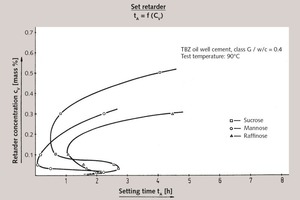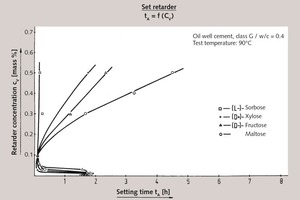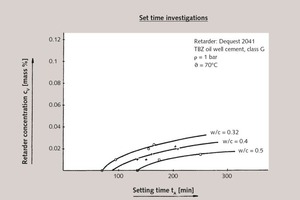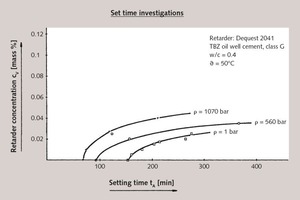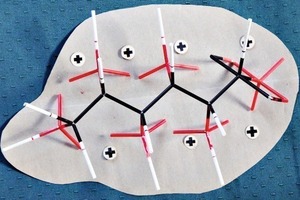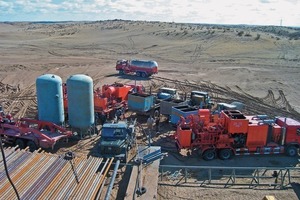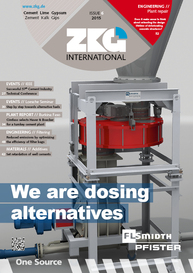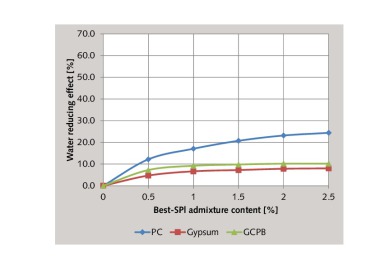Set retardation of well cements
During drilling a wellbore is constantly filled with drilling mud. For the subsequent cementing process cement slurry is introduced through the casing to the lowest point and pumped back up into the space between the formation (borehole) and the piping. Thus, the slurry displaces the drilling mud. Due to elevated temperatures and hydrostatic pressures in a borehole, the properties of cement slurries must be tailored on the actual well conditions with specific, often quite expensive cement admixtures. This article is about the search for improved set retarders for cementing.
1 Historical development
The industrial exploitation of deep and ultra-deep oil and natural gas reservoirs has also increased the difficulties in bore hole cementing. Elevated borehole temperatures call for set-retarded cements, i.e., the cement slurry must remain pumpable until it has reached the location of the final cement mantle. Until 1930 the setting reactions in well cementing were usually accelerated, i.e., the aim was to shorten the “waiting-on-cement (WOC)” time, but later it became necessary to achieve precisely the opposite effect.
This did not represent a problem, particularly as...

